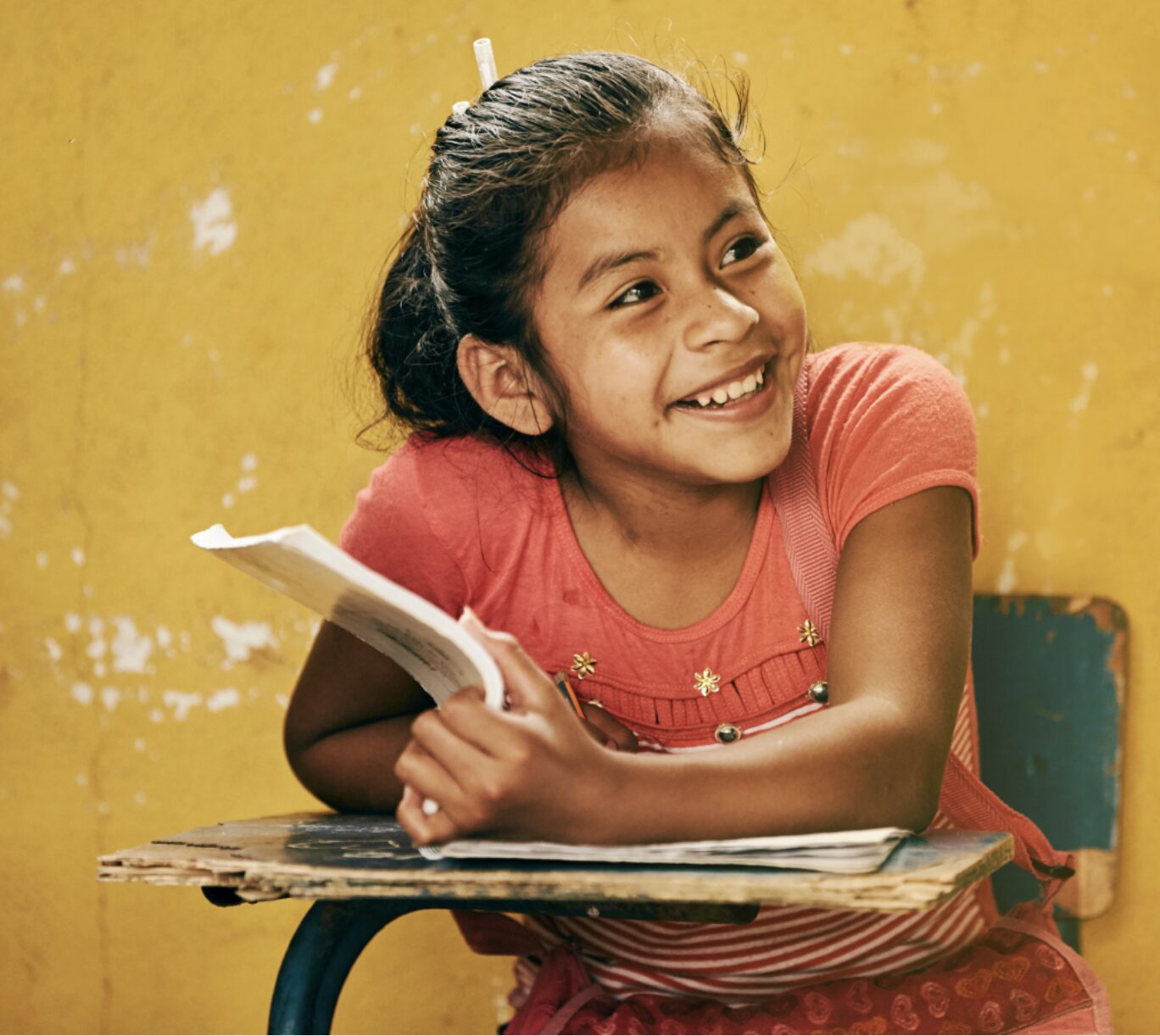To follow the powerful words of our Chief Impact Officer in a Transparency Talk from June 13th, we want to provide some more detail on what PoP is doing in the realm of girls’ education — and how we’re making a difference. As Leslie mentioned in her piece, the girls who live in the countries we serve face a lot of barriers when it comes to getting an education. Whether it is prioritizing the needs of the family over school by attending to agricultural responsibilities, or being fearful and/or unable to attend school while menstruating because there is no private bathroom or clean water, the bottom line is that girls make up a larger percentage of school children compared to boys¹.
Through our close partnerships with the communities we serve, especially getting buy-in and excitement around education in the steps leading up to the school build process, we are already overcoming the odds by reaching gender parity in attendance, with girls representing 51% of 90,000+ current students in PoP schools. And, it doesn’t stop there — as a recent analysis suggests, we’re reaching performance parity in the classroom as well.
In an effort to better understand the influence of our Teacher Support (TS) program on girls in Ghana, Guatemala and Laos, the PoP Learning & Evaluation (L&E) team conducted a post-hoc analysis on student performance over the last two school years (i.e., 2015–2016² and 2016–2017), in an effort to answer two fundamental questions:
- Is there a difference in performance between boys and girls in PoP schools?
- Is there a difference in performance between girls in PoP schools with TS programming compared to PoP schools without TS programming?
Using student performance as one measure of the success of our TS program is built on the hypothesis that well-trained teachers lead to improved student performance in the classroom. PoP uses the Early Grade Reading Assessment (EGRA) to quantify the performance of students in the schools we’ve built.
When considering that PoP TS programming does not specifically focus on girls, prior to the analysis, the L&E team hypothesized that there would be 1) no differences between boys and girls on the EGRA and 2) girls in schools receiving TS programming would perform better than girls in schools without TS programming. Upon completion of the analysis, we found that boys and girls in PoP schools with TS programming show minimal differences in EGRA scores. In fact, for the Ghana 2015–2016 and Guatemala 2016 school years, there were no significant differences in scores across all EGRA testing components. When differences were identified, it was always on just one section of the EGRA³.
As for performance of girls in PoP TS schools compared to girls in PoP schools without TS programming, differences were found across all three countries:
- Girls in Ghana and Laos being taught by teachers in the TS program show significantly higher scores in a select number of EGRA test components.
- Girls in Ghana TS schools during the 2015–2016 school year scored significantly higher in five out of eight testing components: phoneme awareness, letter recognition, word recognition, passage reading and passage comprehension. During the following school year in Ghana, girls in TS schools scored significantly higher on the writing component.
- In Laos, girls in TS schools scored significantly higher on the letter sound component of the EGRA.
- Guatemala differed from the other two countries and saw lower scores from girls in PoP schools with TS programming during the 2017 school year⁴, with scores being significantly lower in word recognition, passage reading and writing.
The results seen when focusing specifically on girls in PoP schools mirror that of the analyses conducted on all students (i.e., girls and boys) in Ghana, Guatemala and Laos during the aforementioned schools years⁵. Thus, our analysis provides guiding insight to our central research questions and offers partial support to our hypotheses. The lack of differences between girls and boys on EGRA performance, with the exception of a few testing components in different countries, suggests that our TS program equally benefits girls and boys in Ghana, Guatemala and Laos.
PoP strives to provide a safe and healthy learning environment where well-trained and supported teachers can deliver a quality education to students. While our model does not include a gender-specific component, our schools and programs exclude no one. Girls are benefiting from all components of our classroom and we will continue to advocate for gender parity in our schools, offer safe learning environments to all of our students and establish a path for girls to succeed beyond primary school.
¹World Bank summary on girls’ education (2017); ²Laos did not have Teacher Support programming during the 2015–2016 school year; ³Ghana 2016–2017 school year — girls had significantly lower scores than boys on reading comprehension; Guatemala 2017 school year — girls had significantly higher scores than boys on writing; Laos 2016–2017 school year — girls had significantly lower scores than boys on letter sounds; ⁴No significant differences were found during the 2016 Guatemala school year; ⁵Ghana 2015–2016; Ghana 2016–2017; Guatemala 2016; Guatemala 2017; Laos 2016–2017

